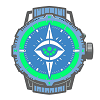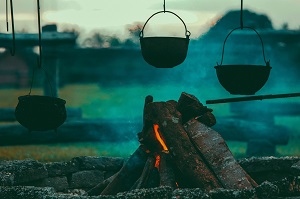![]() Fire-Starting Difficulties is a news and information topic monitored and covered by: Prepper Watch – Survival
Fire-Starting Difficulties is a news and information topic monitored and covered by: Prepper Watch – Survival
The Critical Role of Fire in Survival
Fire is more than just a comfort—it’s survival. A functioning fire allows a prepper to:
- Boil water to remove pathogens
- Cook food to make it digestible and safe
- Provide heat during cold conditions
- Dry wet clothes and gear
- Offer light in the darkness
- Signal for help in emergencies
- Ward off predators and insects
Yet despite its importance, many preppers underestimate how difficult starting a fire can be—especially under adverse conditions like wet environments, high winds, or when supplies are limited. Fire-starting difficulties can turn a manageable survival situation into a life-threatening emergency.
Why Fire-Starting Fails
Understanding why fire-starting fails is the first step toward solving it. Common issues include:
- Lack of Dry Materials – Wet tinder, damp wood, and soggy kindling are a recipe for frustration.
- Inadequate Tools – Faulty lighters, wet matches, or expired fire-starting materials can render kits useless.
- Improper Technique – Poor structure (no airflow), smothering the flame, or choosing the wrong ignition method.
- Environmental Conditions – Wind, rain, snow, or high humidity can work against your fire-starting efforts.
- Overconfidence & Inexperience – Many assume starting a fire is easy until they try it without practice.
Building a Fire-Starting Kit (Multi-Layered Approach)
A smart prepper builds redundancy into fire-starting kits. Three levels of fire-starting should be included: ignition sources, tinder, and kindling support.
Ignition Tools:
- Ferro rods / magnesium blocks
- Waterproof stormproof matches
- Disposable lighters (BIC preferred)
- Flint and steel
- Battery and steel wool method
- Lens-based ignition (magnifying glass/fresnel lens)
- Plasma arc lighters (USB rechargeable)
Tinder Options:
- Cotton balls soaked in petroleum jelly (in a waterproof container)
- Char cloth
- Commercial fire starters (WetFire, TinderQuik)
- Dryer lint
- Fatwood
- Birch bark
- Dried grass and pine needles
Kindling & Fuel:
- Twigs, pencil-sized sticks
- Finger-sized branches
- Progressively thicker wood
- Fire logs or pre-dried hardwood in storage
Waterproofing and Storage Strategies
Even the best kit is useless if it’s soaked or inaccessible.
Storage Tips:
- Keep ignition tools in sealed plastic or metal waterproof containers
- Use vacuum-sealed bags for tinder
- Store extra gear in your bug-out bag, vehicle, and home
- Include fire kits in EDC (Everyday Carry)
Prepper-Level Redundancy:
- One set on your person
- One in your bag
- One cached in a secondary location
- One inside a vehicle or RV
Label each kit, test components monthly, and rotate lighters annually.
Fire-Starting Methods by Environment
A prepper must tailor fire-starting methods to their local terrain and conditions.
Wilderness (Wet Forest or Snow):
- Use birch bark and fatwood for wet conditions
- Collect dry wood from under logs or inside dead trees
- Elevate fire on a dry platform of rocks or bark
Desert/Arid Regions:
- Leverage magnifying glass for sun ignition
- Use cactus fiber or dry grasses
- Dig a Dakota fire hole to shield flame from wind
Urban/Suburban:
- Fire bricks, cardboard, cotton cloth, and lint
- Use a BBQ grill or metal bucket for safe burning
- Hidden heat sources like fire paste or alcohol gel
Fire-Building Techniques for Success
Classic Fire Structures:
- Teepee Fire:
- Best for quick ignition
- Excellent airflow
- Log Cabin Fire:
- Stable and long-burning
- Good for cooking
- Lean-To Fire:
- Good in wind or rain
- Use one log as a base, lean tinder and kindling
Emergency Fires:
- One-Match Fire: Train to light with a single ignition source
- Upside-Down Fire: Big logs on bottom, kindling and tinder on top—burns longer
- Dakota Fire Hole: Hidden and efficient; ideal for stealth or windy terrain
Practice each method under varying conditions—especially during rain or snow.
Practicing Fire-Starting in Realistic Scenarios
Drills to Practice:
- Start a fire in the rain with a ferro rod
- Start a fire using only natural materials from your property
- Time yourself: Can you get a fire in under 5 minutes?
- Use gloves or simulate cold hands
- Blindfolded fire-starting for night or emergency simulation
Track Your Skills:
- Create a fire-starting log
- Record weather, materials used, and time-to-flame
- Track failures and lessons learned
The more you fail in practice, the less you’ll fail when it counts.
Teaching Others and Group Preparedness
Fire-starting is a core prepper skill every group member should master.
Group Readiness:
- Designate fire masters for larger groups
- Conduct fire-starting competitions during group training
- Standardize kits among group members
- Share and test each other’s gear monthly
Teach children and teens the basics under supervision. Build muscle memory and remove fear through repetition.
Fire Safety and Regulations
Being a skilled fire-starter also means being a responsible one.
Safety First:
- Clear area of flammable material
- Keep water, dirt, or fire extinguisher nearby
- Never leave a fire unattended
- Fully extinguish: Drown, stir, and feel cold
Legal Considerations:
- Know burn bans in your area
- Use fire pits or contained methods when required
- In a disaster, stealth may be critical—limit visible smoke and light
Fire can save your life, but used recklessly, it can destroy everything you’re trying to protect.
Final Thoughts & Long-Term Preparedness
Mastering fire-starting is about more than having a few matches. It’s about mindset, training, and adaptability.
Fire-Starting Checklist:
Multiple ignition methods
Natural and synthetic tinder
Kindling and fuel sources
Practice in all conditions
Group education and drills
Fire safety knowledge
Off-grid methods (no batteries, no fuel)
Long-Term Fire Readiness Ideas:
- Store extra firewood and kindling
- Create fire caches with local materials
- Make your own char cloth and waterproof matches
- Stock up on magnesium bars and fire paste
- Learn to build a bow drill or hand drill
In the end, fire is freedom.
Without it, warmth, food, water, and security fade. With it, a prepper gains control over chaos. Make fire-starting second nature—and you’ll never be in the dark.


